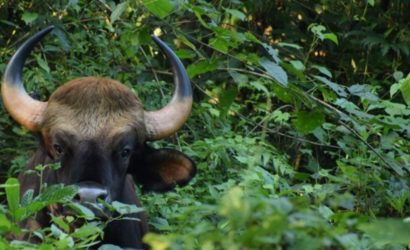Suntalekhla - Samsing Circuit
Suntalekhola – Rocky Island – Samsing – Jhalong, Paren & Bindu
Suntalekhola
Lets first get into the name of the place and its meaning. In Nepali “Suntale” means oranges and “Khola” means stream. There is a mountain stream and what about oranges? Of course, you will find oranges too. Oranges are grown here. Thus the place is called “Suntalekhola”.
There is a Hanging Bridge at Suntalekhola. Suntalekhola is surrounded from all sides by lush green rain forest.
The place is ideal for birding. Wake up in the morning with the chirping of birds. Let them be your alarm clock. Winged beauties found at Suntalekhola are – Slaty-backed Forktail, Sultan Tit, Yellow-vented, Golden-spectacled, and Chestnut-crowned Warblers, Greater Necklaced Laughingthrush, Long-tailed Sibia, White-naped, and Black-chinned Yuhina.
Hiking 5 km uphill will take you to Mouchaki beat of Neora Valley National Park. Visit this point worth the pain even if you are not a wildlife or birding enthusiast.
Rocky Island
Don’t get confused by the name. There is no island at Rocky Island. But as the name suggests there are rocks of different shapes and sizes and making its trough this rocks flows the mountain river Murti.
Rock Island offers you a lot of photographic opportunities.
Samsing
Samsing is famous for its Tea Estates. Samsing is at an elevation 3000ft above sea level. Nearest towns from Samsing are – Matelli and Chulsa. From here will panoramic view of the valleys and mountains.
Samsing reminds you of the morning tea even at night, the air around is filled with the fragrance of tea. You will have the opportunity to see local women pluck tea and put them back at the bamboo basket tied at their back.
Jhalong, Paren & Bindu
Jhalong:Nearest railway station to explore this part of Dooars is New Mal. The road from New Mal to Jhalong goes through the famous Chapramari Sanctuary – known for mammoth Tuskers. Sighting Elephant or Gaur on the way is not uncommon.
On the way, there are rubber plantations. You will see trees with bags hung on the branches. An incision is made on the bark from which latex oozes out, which is processed into rubber.
Going further will take you to Gairibas village. Residents of this village are mostly Gorkhas- known for their bravery and hospitality. Field Marshal Sam Manekshaw once said, “If a man says he is not afraid of dying, he is either lying or he is a Gurkha”. There is a viewpoint at Gairibas – you will have a bird’s eye view of the entire valley and the Jaldhaka River cutting through the slopes of the valley.
Jhalong is 2 km from Gairibas. Jhalong is on the banks of Jaldhaka River. On the far end are the Bhutan hills. The prime attraction of Jhalong is Jhaldhaka Hydro Electric Project.
A small market has developed along the Jaldhaka River. The border is porous in nature. Bhutanese people on the other side of the Jaldhaka River come to this market for their ration. There is a market in Bhutan hills also. Known as ‘Gol Bazaar’ and villagers from Indian to go there… an amazing harmony exists.
Paren:Enclosed with lush alpine forest, Paren is a quaint Himalayan hamlet of Dooars. Paren is the place to fill your lungs with fresh oxygen. The sight of morning sun cutting through the pine trees is a delight to behold.
Cardamom Curing Centre: Located 14 km from Paren is a Cardamom Curing Centre. It is the most famous sightseeing destination in Paren. Here, visitors see the method of processing cardamom. It is famous for processing the finest cardamom in Dooars region.
Rongo: Located further from Gairibas is Rongo another famous sightseeing place of Paren. Rongo also spelled as Rongu was once the Headquarter of Cinchona Plantation. At an elevation of 4500ft, Rongo is famous for offering the grand vista of Jhalong and Jaldhaka Valley.
Bindu:Bindu is identified by Jaldhaka Dam. It one of the oldest hydroelectric power projects between India and Bhutan. Three streams namely Dudh Khola, Bindu Khola, and Jaldhaka meet at another side of the dam and emerge as Jaldakha River. Tourists are not allowed to visit the dam but the dam can be seen from a distance.
Cardamom plantation and orange orchards are the two main economic activity of the local villagers. You can also see terraced farming at several places near Bindu. There are few doubts, it’s not a bad idea to try momos here.






